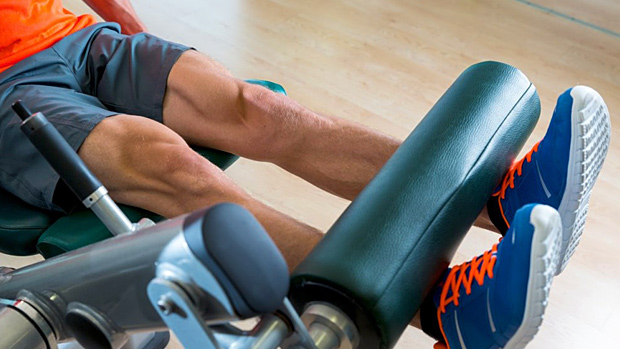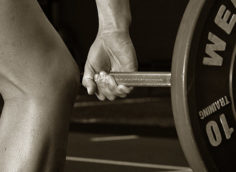Back Off!
Back-off sets are usually the first "finisher" a lifter learns. That makes sense because back-off sets are somewhat instinctive. Even someone who's never read any articles about lifting will eventually stumble onto the technique all on their own.
You do your 3, 4, or 5 heavy work sets and then, maybe having failed to get a satisfying pump, you reduce the weight for a final set and piston away until your gloriously blood-engorged muscles flame out. It's bodybuilding's version of an orgasm, complete with an O face.
We've always assumed back-off sets work because, to a point, more volume is generally good, more time-under-tension is good, and a final set done with lighter weight and a greater number of reps taps into muscle fibers that only participated casually, if at all, in your main work sets.
Even so, part of us wondered if these sets really did do anything to make muscle grow, or worse yet, were detrimental to muscle growth because maybe the back-off sets tapped too far into our recovery abilities.
To find some answers, I dug up an older study conducted by some Japanese researchers who were also curious about back-off sets.

Goto, Nagasawa, and their colleagues recruited 16 men and assigned them to one of two groups:
- Hypertrophy/Strength (HS)
- Hypertrophy/Combination (HC)
During the first 6 weeks, both groups did leg presses and leg extensions using a hypertrophy-style regimen to gain muscle (10-rep maxes, short rest intervals, and progressively decreasing loads).
After the 6 weeks were up, the HS group continued to work out another 4 weeks, this time performing a strength program where they did 5 high-intensity (90% of 1RM) sets. The HC group also continued to work out for another 4 weeks. Like the HS group, they also did 5 high-intensity sets, but they added a single set of low-intensity, high-rep work (the back-off set).
Throughout the study (at weeks 2, 6, and 10), the researchers measured the muscle strength, endurance, and cross sectional area of the participants' leg muscles.
After the initial six weeks (during which the participants had practiced identical exercise programs), there was, predictably, no significant difference in the percentage changes of all variables between the two groups.
After 10 weeks, though, the group that had switched over to the back-off set protocol (HC) showed significantly larger increases in leg press 1RM, maximal isokinetic strength, and muscular endurance in the leg extension. The cross sectional area of the quadriceps muscles of the HC group also "tended" to be larger.
The researchers concluded the following:
"A combination of high- and low-intensity regimens is effective for optimizing the strength adaptation of muscle in a periodized training program."
There are various ways to do back-off sets. Powerlifters might do some work sets at 90% of their 1RM and then do a couple of doubles or triples at 90% of their work sets as back-off sets. This is done to build additional strength.
Bodybuilders, however, generally drop their working weight by anywhere from 35 to 50% for their back-off set and aim to pump out an additional 25 reps or more until the muscles get all angried up and they can't do any more. This, hopefully, gets them results similar to those noted in the Japanese study.
One back-off set should suffice and while many lifters might choose to do them only on bench presses (mainly because they don't have the cojones to do them on squats), there's no real reason, outside your personal recovery limitations, that you can't do a back-off set for nearly every body part in a workout.
Most lifters wait 30 to 60 seconds between their final heavy work set and their back-off set, but many prefer the additional agony imposed by doing a back-off set immediately after the last heavy set.
- Goto K et al. Muscular adaptations to combinations of high- and low-intensity resistance exercises. J Strength Cond Res. 2004 Nov;18(4):730-7. PubMed.





